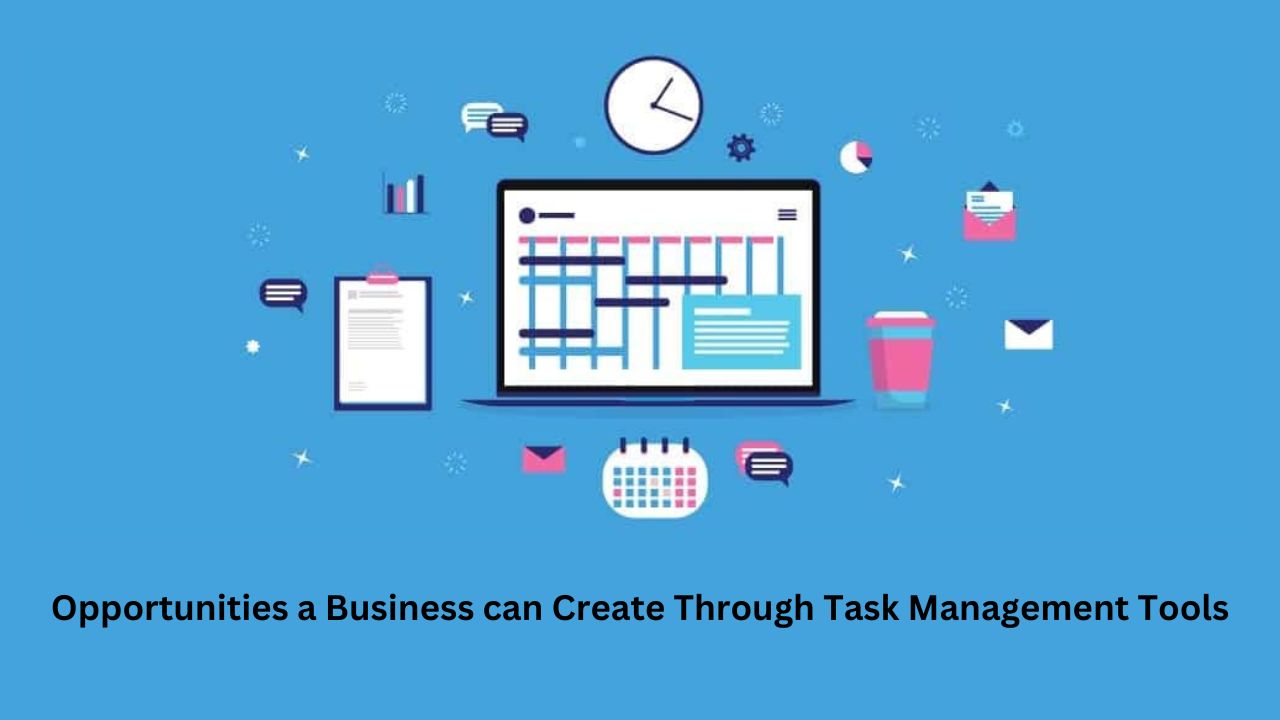by Soumyajit Admin
Share

In today’s fast-paced business landscape, staying ahead of the competition means finding innovative ways to streamline processes and increase efficiency. One of the most effective strategies for achieving this is automation.
Automation not only reduces manual tasks but also improves accuracy and frees up valuable time and resources for more strategic activities.
But how do you identify the right automation opportunities for your organization?
That’s precisely what we will explore in this comprehensive guide on “How to Identify Automation Opportunities.”
By the end of this article, you will have the knowledge and insights you need to supercharge your business operations.
Importance of Identifying Automation Opportunities in Businesses
In today’s rapidly evolving business landscape, the importance of identifying automation opportunities cannot be overstated. Automation serves as a potent catalyst for maintaining competitiveness and agility. By automating repetitive and time-consuming tasks, businesses can elevate productivity levels, minimize errors, and harness substantial time and cost savings.
Nevertheless, it’s imperative to exercise caution and strategic thinking when embarking on automation initiatives. Not all processes are ripe for automation, and choosing the right opportunities that harmonize with your organizational objectives and available resources is pivotal.
A well-thought-out approach ensures that automation becomes a transformative force, propelling your business toward efficiency, growth, and sustained success.
Also, read our article on Embracing Automation In Business Management Systems
So, today, here, in this blog post, we will walk you through a step-by-step process to identify automation opportunities effectively.
How to Identify Automation Opportunities In Business
1. Analyze Your Current Workflow:
The first step in identifying automation opportunities is to thoroughly analyze your current workflow. This involves documenting all the processes and tasks that are part of your daily operations. Consider the following:
- Who is responsible for each task?
- How is each task currently performed?
- What are the inputs and outputs for each task?
- Are there any dependencies between tasks?
By creating a comprehensive workflow map, you’ll gain a clear understanding of your existing processes, which is crucial for pinpointing areas where automation can make a difference. Be sure to involve relevant team members in this analysis to get a well-rounded perspective.
2. Identify Repetitive and Time-Consuming Tasks:
Once you have a detailed workflow map, focus on identifying repetitive and time-consuming tasks. These are the low-hanging fruit when it comes to automation opportunities. Look for activities that occur frequently and require significant manual effort. Common examples include data entry, report generation, and email notifications.
By automating these tasks, you can free up your team’s time to work on more valuable and strategic activities. Additionally, automation reduces the risk of human error associated with manual tasks, leading to increased accuracy and consistency in your operations.
3. Evaluate the Feasibility of Automation:
Not all tasks are suitable for automation. Some tasks may involve complex decision-making or require human judgment. To identify the right opportunities, assess the feasibility of automation for each task on your list. Consider the following factors:
- Is the task rule-based and repetitive?
- Are there well-defined criteria for task completion?
- Does the task involve interacting with other systems or software?
- Can the task be standardized and documented?
Tasks that meet these criteria are excellent candidates for automation. On the other hand, tasks that require creativity, empathy, or subjective judgment are better left to human intervention.
4. Prioritize Automation Opportunities:
With a list of potential automation opportunities in hand, it’s time to prioritize them based on their potential impact and ease of implementation. Use a scoring system or matrix to rank each opportunity according to criteria such as:
- Potential time savings
- Cost savings
- Reduction in errors and rework
- Alignment with strategic objectives
- Complexity of implementation
By prioritizing automation opportunities, you can focus your resources on the most promising ones that will provide the greatest benefits to your organization.
5. Explore Automation Solutions:
Once you have identified and prioritized automation opportunities, it’s time to explore automation solutions. Depending on the nature of the task, you may have various options, including:
- Custom Software Development: When you have unique and complex automation needs, custom software development shines. It allows you to build tailored solutions that precisely match your workflow, offering maximum flexibility and efficiency. However, it typically requires a larger budget and a longer development timeline due to its bespoke nature.
- Off-the-Shelf Software: Off-the-shelf software solutions provide automation features that can be adapted to your processes. They are cost-effective and offer a quicker implementation timeline. However, you may need to compromise on customization to fit your specific needs.
- Robotic Process Automation (RPA): RPA tools excel at automating rule-based, repetitive tasks by emulating human actions in software applications. They are especially valuable for tasks involving data entry and manipulation. RPA offers rapid implementation and significant time savings but may not handle highly complex processes effectively.
- Workflow Automation Platforms: These platforms offer a comprehensive suite of automation tools and integrations. They are ideal for streamlining various processes across your organization. Workflow automation platforms provide a balance between customization and ease of implementation. They can be highly cost-effective and adapt to evolving business needs.
6. Test and Iterate:
Before fully implementing automation, it is crucial to test your chosen solution thoroughly. Start with a small-scale pilot project to identify any potential issues or bottlenecks. Gather feedback from the team members involved and make necessary adjustments.
Automation is not a one-time endeavor; it is an ongoing process of improvement. Continuously monitor the automated processes, gather performance data, and iterate to enhance efficiency further. This will ensure that your automation efforts remain aligned with your evolving business needs.
7. Train and Empower Your Team:
As you implement automation, it is essential to involve your team and provide the necessary training and support. Some team members may be concerned about job security or resistance to change, so it is crucial to communicate the benefits of automation clearly. Emphasize how automation can enhance their roles by reducing repetitive tasks and allowing them to focus on more meaningful work.
Empower your team to take ownership of the automated processes and encourage them to provide feedback for further improvements. Creating a culture of continuous learning and adaptation is essential for long-term success.
8. Measure and Monitor:
To ensure that your automation efforts are delivering the expected results, establish key performance indicators (KPIs) and regularly measure and monitor them. Some common KPIs for automation initiatives include:
- Time saved on specific tasks
- Reduction in errors or rework
- Increased productivity
- Cost savings
- Customer satisfaction and service quality
Use these KPIs to track the impact of automation on your business and make data-driven decisions for future automation projects. Adjust your strategy as needed to maximize the benefits.
Also read: Tips for Business Process Automation
Challenges and Considerations During Identifying Automation Opportunities In Business
Identifying automation opportunities is a crucial step in improving efficiency, reducing costs, and streamlining processes in various industries. However, this task comes with its own set of challenges and considerations. Here are some of the key challenges and considerations to keep in mind when identifying automation opportunities:
-
Process Understanding:
Challenge: Fully understanding the existing processes and workflows can be complex, as they may involve multiple steps, dependencies, and variations.
Consideration: Conduct thorough process mapping and analysis to gain a clear understanding of how tasks are currently performed.
-
Data Quality:
Challenge: Automation often relies on data inputs, and poor data quality can lead to errors and inefficiencies.
Consideration: Ensure data accuracy, completeness, and consistency before implementing automation solutions.
-
Cost-Benefit Analysis:
Challenge: Determining whether the benefits of automation outweigh the costs can be challenging, as it requires forecasting ROI and considering long-term effects.
Consideration: Conduct a comprehensive cost-benefit analysis, factoring in initial implementation costs, ongoing maintenance, and expected efficiency gains.
Also read: How Does Business Automation Help In Cost Reduction
-
Change Management:
Challenge: Employees may resist automation initiatives due to fear of job displacement or discomfort with new technologies.
Consideration: Implement effective change management strategies, including communication, training, and involving employees in the automation process.
-
Scalability:
Challenge: Some automation solutions may work well at a small scale but struggle to scale up to meet the demands of a growing organization.
Consideration: Evaluate the scalability of automation technologies to ensure they can accommodate future growth.
-
Compliance and Regulations:
Challenge: Some industries, such as healthcare or finance, are subject to strict regulations that may impact the implementation of automation.
Consideration: Ensure that any automation solutions comply with relevant regulations and data security standards.
-
Technology Compatibility:
Challenge: Existing systems and technologies may not be compatible with the chosen automation tools.
Consideration: Assess the compatibility of automation solutions with your existing infrastructure and IT environment.
-
Security:
Challenge: Automation can introduce vulnerabilities if not properly secured, potentially leading to data breaches or cyberattacks.
Consideration: Prioritize cybersecurity measures, including encryption, access controls, and regular security audits.
-
Human-In-The-Loop Automation:
Challenge: Some processes may require human intervention or decision-making that cannot be fully automated.
Consideration: Implement human-in-the-loop automation where necessary, combining human expertise with automated processes.
-
ROI Tracking:
Challenge: Continuously measuring and tracking the return on investment (ROI) of automation initiatives can be challenging.
Consideration: Implement metrics and key performance indicators (KPIs) to monitor the impact of automation on efficiency, cost savings, and other relevant factors.
-
Ethical Considerations:
Challenge: Automation can raise ethical concerns, especially when it involves decision-making or sensitive data handling.
Consideration: Address ethical considerations by establishing clear guidelines and ensuring transparency in automated processes.
Identifying automation opportunities requires a thoughtful and strategic approach to address these challenges and considerations effectively. It’s essential to involve cross-functional teams, including IT, operations, and stakeholders, to ensure a well-rounded assessment and successful implementation of automation initiatives.
NOTE:
In today’s fast-changing business world, spotting chances to automate tasks is key for success. Figuring out where automation can help save time, work more efficiently, and grow is crucial for businesses to stay ahead. Whether it’s handling routine jobs or analyzing data, automation offers many opportunities across different industries. But knowing how to make the most of it requires the right guidance. That’s where Econstra comes in. As a top business consultant, Econstra specializes in automation solutions. They offer tools and systems to help businesses identify and use automation opportunities effectively. With Econstra’s support, companies can improve their operations, save time, and keep up with the ever-changing market.
Conclusion: How to Identify Automation Opportunities in Business
In conclusion, identifying automation opportunities is a crucial step toward optimizing your business operations and staying competitive in today’s rapidly changing landscape. By following the steps outlined in this guide, you can effectively analyze your current workflow, pinpoint repetitive tasks, assess feasibility, prioritize opportunities, and implement automation solutions that will yield significant benefits.
Remember that automation is not a one-size-fits-all solution. It requires careful planning, testing, and ongoing evaluation to ensure it aligns with your organization’s goals and adapts to changing needs. Additionally, involving your team and fostering a culture of innovation and continuous improvement is essential for long-term success.
Automation is a powerful tool that can revolutionize how your business operates, allowing you to do more with less. By harnessing the potential of automation, you can unlock new opportunities, enhance productivity, and ultimately drive growth and success for your organization.
So, don’t wait any longer; start identifying your automation opportunities today and pave the way for a brighter and more efficient future for your business.
STAY IN THE LOOP
Subscribe to our free newsletter.
Are you looking to enhance your business’s efficiency and productivity without breaking the bank? In the dynamic world of business, staying organized and on top of tasks is not just an option—it is a necessity. Task management tools have emerged as a game-changer for businesses of all sizes, offering the power to streamline operations, improve […]
In today’s fast-paced, dynamic business environment, the success of any organization hinges on the performance of its teams. High-performing teams are not just a product of chance; they are meticulously crafted through effective leadership and strategic talent management. Today, here, in this blog post, we delve into the intricacies of developing high-performing teams, exploring the […]
In the realm of teamwork, effective communication acts as the glue that holds everything together. Whether you are collaborating on a project, managing a team, or striving for a common goal, clear and open communication is paramount to success. However, despite its significance, communication gaps often plague teams, leading to misunderstandings, delays, and frustration. Here, […]
In today’s fast-paced business environment, change is not just inevitable; it’s essential for growth and survival. Whether it is adapting to new technologies, responding to market shifts, or restructuring internal processes, businesses must be adept at managing change effectively. However, implementing change management strategies can be challenging without a clear roadmap. So, today, here, in […]





